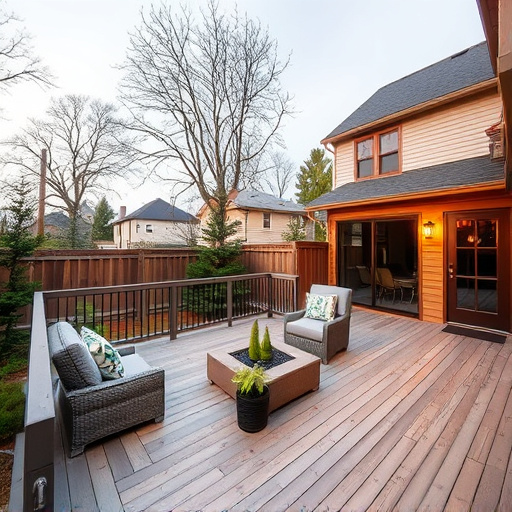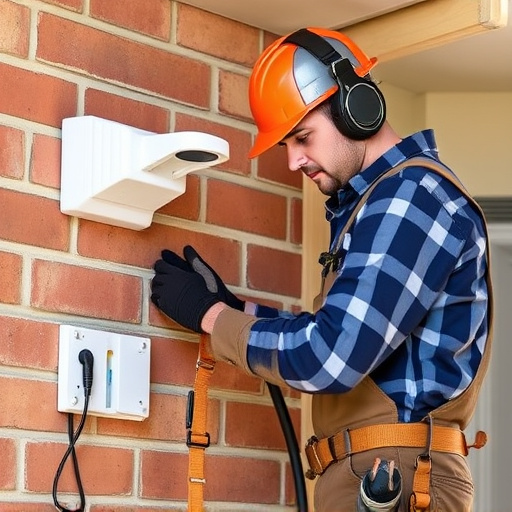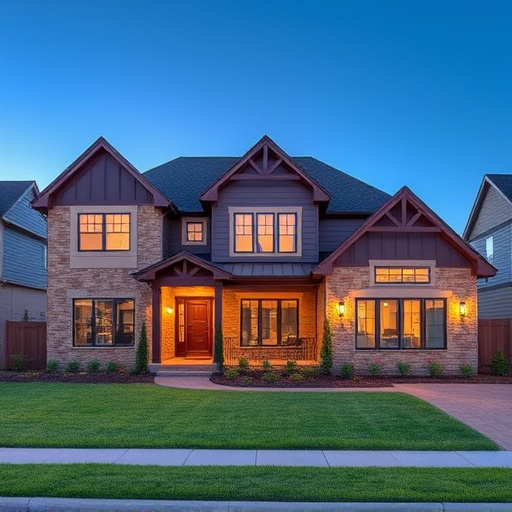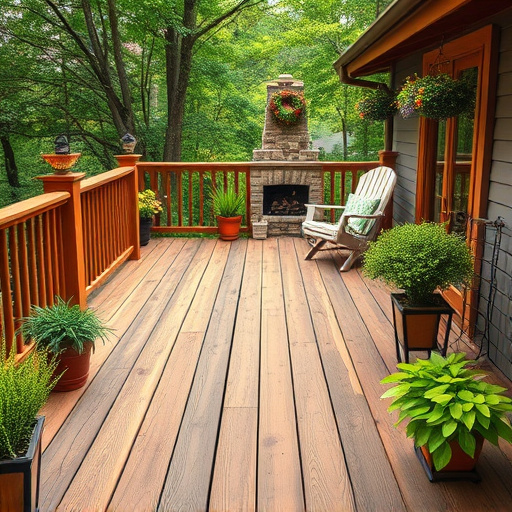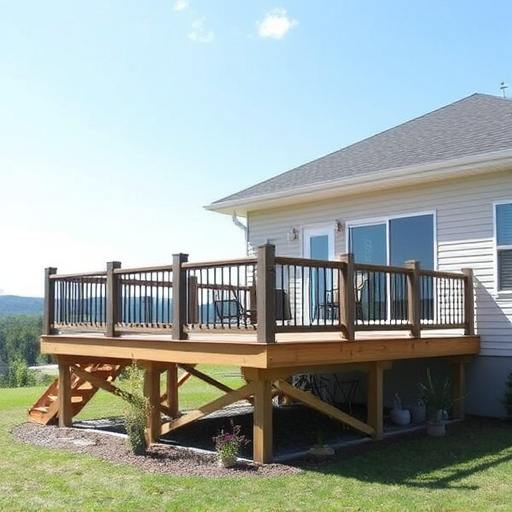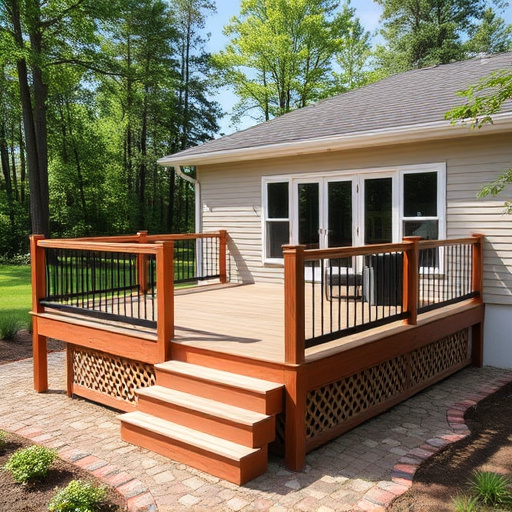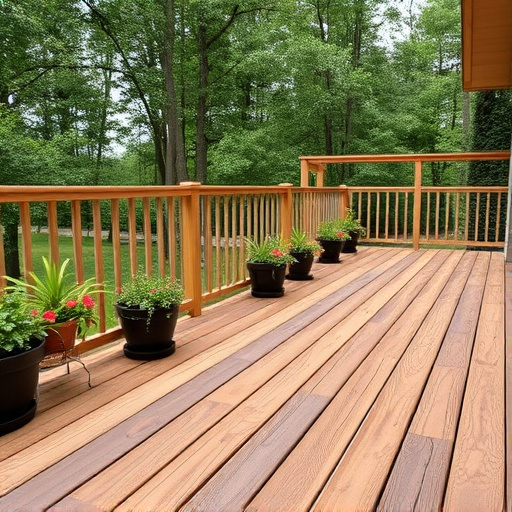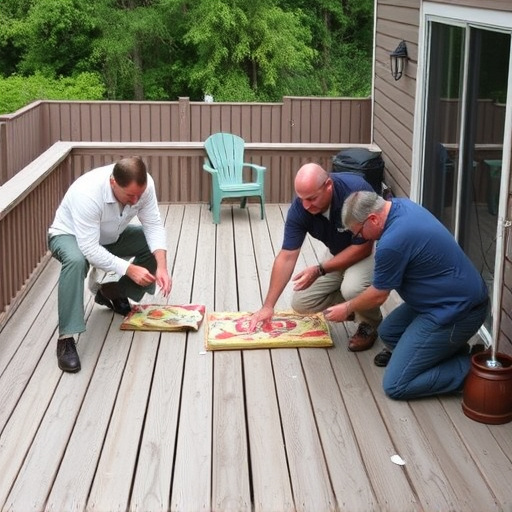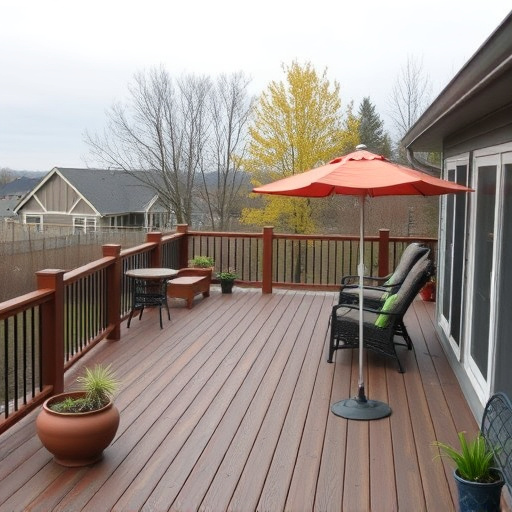Deck boards, crucial for outdoor deck structure and aesthetics, come in wood, composite, or vinyl. Homeowners should inspect them regularly for rot, warping, splitting, and color fading to maintain longevity. Identifying board materials (wood vs. composite) aids in damage assessment and repairs. Cracks, warping, and rot indicators require attention to prevent costly exterior home improvements.
Inspecting your deck boards regularly is essential for maintaining a safe and aesthetically pleasing outdoor space. This guide delves into the process of identifying common damage types and provides a step-by-step framework for annual or semi-annual checks. Understanding the materials used in deck boards, visually inspecting them for cracks, splits, warping, and rot, are crucial steps. By following this routine, you can perform effective repairs or consider replacement, ensuring your deck remains a vibrant and inviting area for years to come.
- Understanding Deck Boards and Common Damage Types
- – Identifying materials used in deck boards
- – Visual inspection: Checking for cracks, splits, warping, and rot
Understanding Deck Boards and Common Damage Types

Deck boards are a vital component of any outdoor deck structure, providing both structural support and aesthetic appeal. They come in various materials, including wood, composite, and vinyl, each with its own unique characteristics and maintenance requirements. Understanding the different types of deck boards and common damage patterns is essential for homeowners to perform regular inspections and maintain their deck’s longevity.
Common damage types include rot, warping, splitting, and fading. Wood deck boards are susceptible to rot, especially if not properly treated or maintained. Warping and splitting often occur due to exposure to extreme weather conditions, such as heavy rain or prolonged sunlight, which can cause the wood to expand and contract unevenly. Composite and vinyl boards, while more durable, may fade over time, losing their vibrant colors. Regular inspection allows for early detection of these issues, enabling homeowners to seek appropriate home service solutions or exterior home improvements before significant damage occurs.
– Identifying materials used in deck boards

When inspecting deck boards for damage, it’s crucial to start by identifying the materials used. Most deck boards are made from wood or composite materials. Wood decks offer a classic look and feel, while composite boards blend the benefits of wood with the low maintenance of plastic. Understanding your specific deck boards is essential for effective inspection and potential repairs.
For example, rot is a common issue in wooden deck boards, requiring regular assessment. Composite boards, on the other hand, are less prone to rot but may still face issues like fading or cracking. A roof consulting expert can provide insights into the specific materials and construction techniques used in your deck, helping you maintain its integrity with appropriate care and, if needed, prompt siding replacement for durable, long-lasting results.
– Visual inspection: Checking for cracks, splits, warping, and rot

A regular visual inspection is a crucial step in maintaining your deck boards and ensuring their longevity. When examining the deck, keep an eye out for any signs of damage, starting with the most obvious: cracks and splits in the board surface. These can be caused by various factors, including settling, extreme weather conditions, or poor installation. Look for both vertical and horizontal cracks, as they could indicate structural issues.
Additionally, check for warping, which is a common problem in deck boards. Warped boards may bow, twist, or cup, leading to an uneven surface. This often occurs due to moisture absorption, exposure to sunlight, or poor storage. Lastly, keep an eye out for rot, a serious issue that can compromise the integrity of your deck. Look for soft, spongy spots, peeling, or discolouration, which could be indicative of a problem with water intrusion or inadequate drainage in the area. Regular visual checks, part of any good maintenance routine, will help identify these issues early on and prevent more extensive (and costly) exterior home improvements like roofing services or commercial siding replacements.
Regularly inspecting your deck boards is essential to maintaining a safe and aesthetically pleasing outdoor space. By understanding the common damage types and performing simple visual checks, you can catch issues early on, preventing costly repairs and ensuring your deck remains a functional and inviting area for years to come. Remember, proper maintenance starts with a keen eye for detail!

